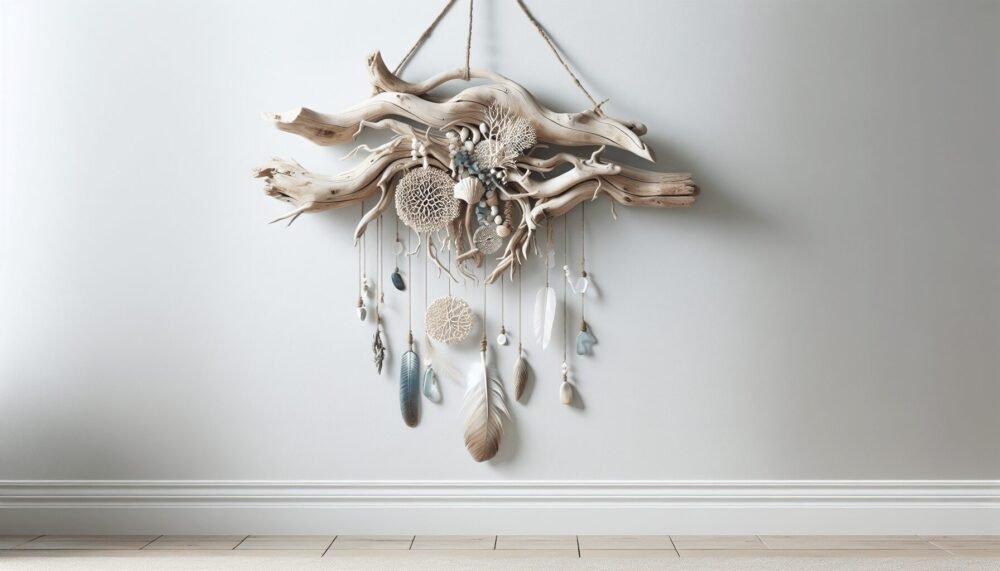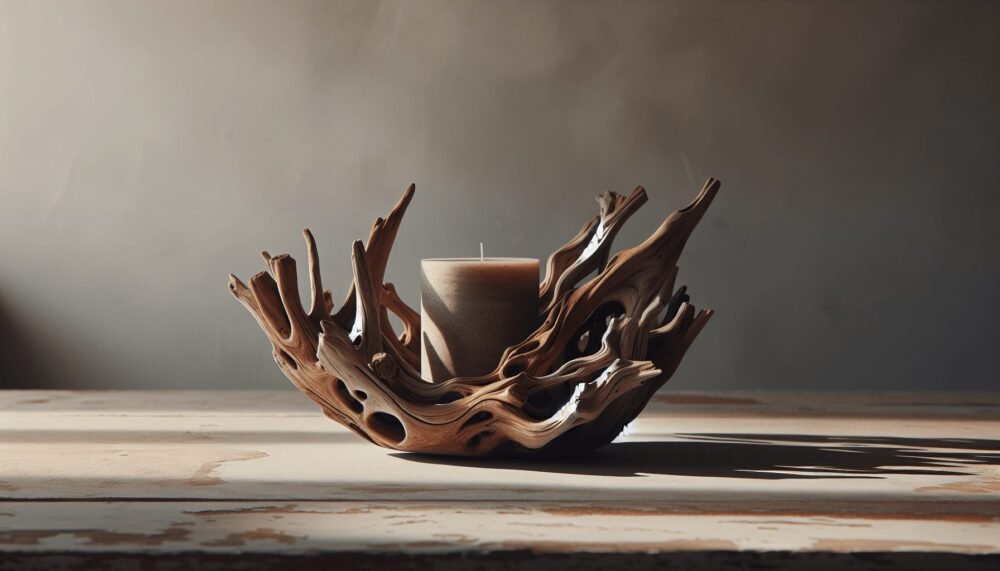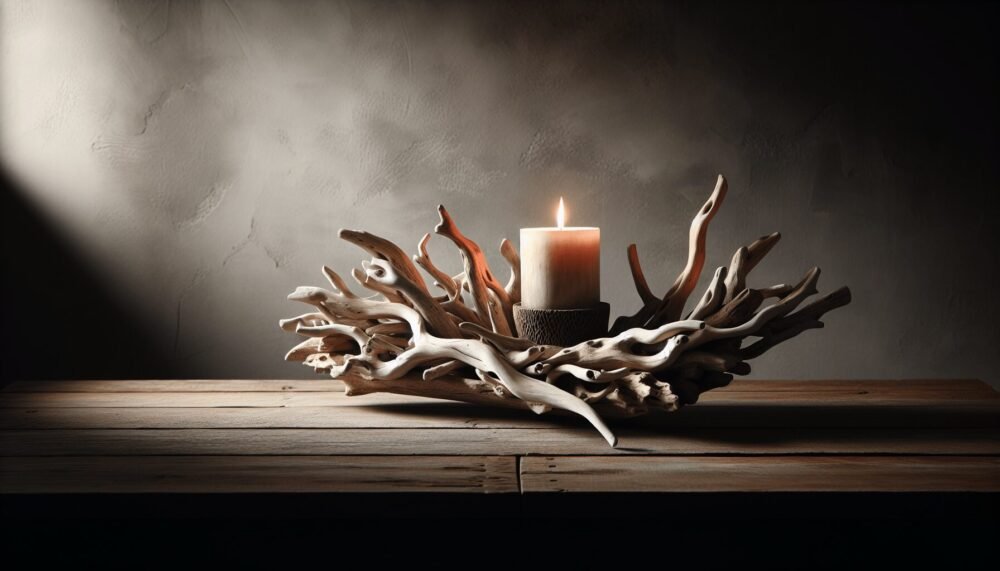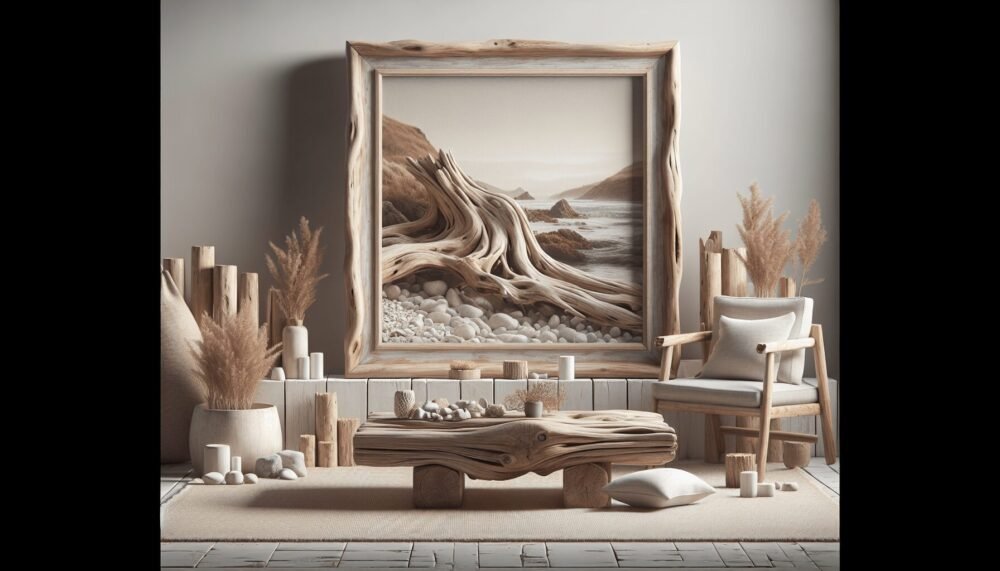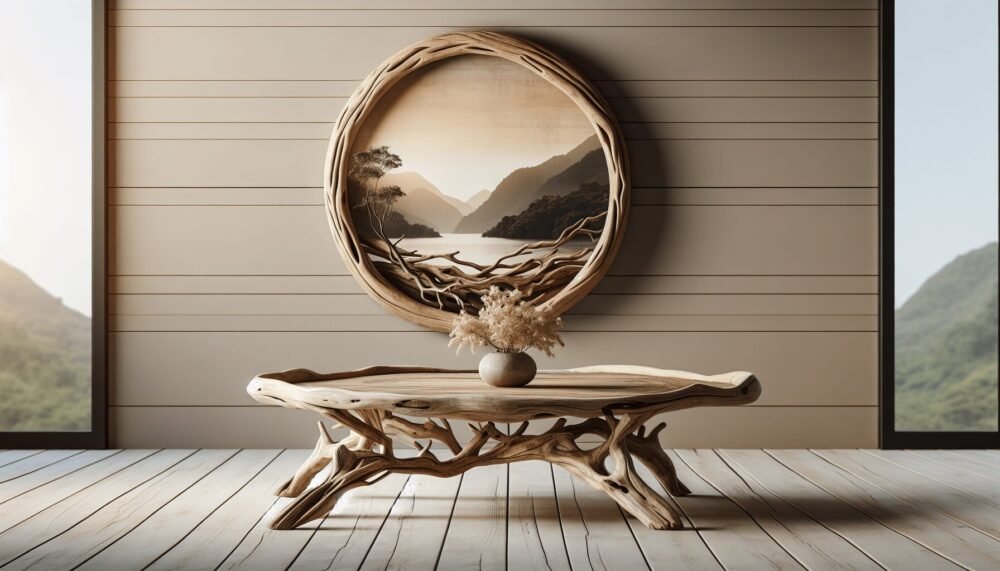Have you ever stumbled upon a piece of driftwood on the beach and wondered about its journey or potential as an art piece? This naturally sculpted wood, worn smooth by the elements, holds a charm and allure that captivates the imagination. Artists around the world have harnessed the beauty of driftwood to create stunning, larger-than-life sculptures. These giant driftwood art pieces not only showcase creativity but also bring nature and art into a harmonious blend.

What is Driftwood?
Origin and Formation
Driftwood forms when trees and other plant materials are washed into rivers, lakes, and oceans. This wood is carried by currents and tides, often journeying great distances before being deposited onshore. As it travels, the wood undergoes a transformation, worn down by water, rocks, and sand, resulting in its smooth and often unique shape.
Characteristics
Driftwood is typically characterized by its smooth texture and weathered appearance. The natural process it undergoes gives it a bleached color and intricate patterns, which make each piece unique. The softness and pliability of driftwood make it an excellent medium for artistic expressions.
The Allure of Giant Driftwood Art
A Fusion of Nature and Art
Giant driftwood art pieces stand out because they are essentially collaborations between nature and the artist. Nature’s work in shaping the wood creates a unique starting point for the artist, who then adds their vision to create something distinctive and beautiful.
Environmental Significance
Using driftwood in art also has environmental implications. Driftwood can clump up on beaches, disrupting local ecosystems and creating navigation hazards. By repurposing this material, artists contribute to environmental cleanup, giving it new life as a piece of art.
Popularity and Trends
In recent years, giant driftwood art has seen a surge in popularity. Artists create everything from intricate sculptures of animals to abstract forms, and these pieces are often featured in galleries, public spaces, and private collections.
Creating Giant Driftwood Art
Finding and Selecting Driftwood
Sourcing the right piece of driftwood is the first challenge. Artists usually scour beaches, riverbanks, and lakeshores, looking for pieces that inspire them. The selection process involves considering the size, shape, and texture of the wood.
| Factor | Considerations |
|---|---|
| Size | Larger pieces are essential for giant sculptures |
| Shape | Intriguing and unique shapes add character |
| Texture | Smoothness and patterning from natural erosion |
Tools and Techniques
Creating driftwood art requires a mix of traditional woodworking tools and some that are more specialized. Here are some commonly used tools and techniques:
Essential Tools
| Tool | Purpose |
|---|---|
| Hand Saws | Cutting driftwood to size |
| Chisels | Carving details and shapes |
| Sandpaper | Smoothing surfaces |
Techniques
- Cleaning: Driftwood must be thoroughly cleaned to remove any salt, dirt, and debris.
- Drying: Proper drying is crucial to prevent mold and shrinking. It can take several weeks for driftwood to dry completely.
- Sculpting: Artists often sketch their designs on the wood first before carving. This ensures precision and minimizes mistakes.
- Assembly: For larger pieces, it’s common to assemble multiple driftwood pieces together. This requires strong adhesives and sometimes support structures.
Famous Driftwood Artists and Their Work
Jeffro Uitto
Jeffro Uitto is renowned for his breathtaking sculptures crafted from driftwood. Based in Washington, Uitto creates life-sized horses, eagles, and other animals, showcasing the natural beauty of the wood and his exceptional craftsmanship.
Debra Bernier
Another notable artist, Debra Bernier, integrates the natural form of driftwood with clay and other materials to create ethereal sculptures of women. Her works often highlight the delicate balance between humanity and nature.
James Doran-Webb
James Doran-Webb’s large-scale sculptures are often displayed in outdoor settings, where they blend seamlessly with their natural surroundings. His work celebrates the raw strength and beauty of driftwood, transforming it into detailed and dynamic animal forms.

Driftwood Art in Public Spaces
Public Installations
Many cities and towns have embraced driftwood art, turning to artists to create public installations. These installations not only beautify the area but also promote environmental awareness and appreciation for natural materials.
Educational Programs
Some educational programs use driftwood art to teach concepts of ecology, sustainability, and art. Workshops and classes inspire participants to see the potential in natural materials and encourage hands-on learning.
| Program Type | Benefits |
|---|---|
| School Programs | Educates children about ecology and art |
| Community Workshops | Engages and unites community members |
Benefits of Driftwood Art
Environmental
By using driftwood as a medium, artists are effectively recycling material that might otherwise cause environmental issues. This approach aligns with principles of sustainability and eco-friendly practices.
Artistic Expression
The unique properties of driftwood provide endless possibilities for artistic expression. Each piece has its narrative, and the artist can choose to either enhance these natural features or transform the wood into something entirely new.
Therapeutic Advantages
Working with driftwood can also have therapeutic benefits. The process of cleaning, handling, and shaping the wood can be calming and meditative, offering mental health benefits similar to those associated with other forms of art therapy.
How to Start Your Driftwood Art Journey
Sourcing Driftwood Safely and Legally
It’s important to ensure that you are sourcing driftwood in a way that respects local laws and regulations. In some areas, collecting driftwood is regulated to protect local ecosystems.
Basic Skills and Tools
Starting with driftwood art does not require advanced skills or expensive tools. Basic woodworking tools are often sufficient. Online tutorials and local workshops can provide guidance for beginners.
| Skill/Tool | Description |
|---|---|
| Basic Woodworking | Familiarity with saws, chisels, and sandpaper |
| Cleaning Techniques | Knowing how to clean and prepare driftwood |
| Drawing/Sketching | Helps in planning the final design of the artwork |
Beginner Projects
For those just starting, smaller projects like driftwood photo frames, mirrors, or simple animal shapes are great ways to become familiar with the material without feeling overwhelmed.
Preserving and Maintaining Driftwood Art
Protection from Elements
If you plan to display your driftwood art outdoors, it’s important to protect it from the elements. Applying a sealant can help preserve the wood and extend the lifespan of your artwork.
Regular Maintenance
Regular maintenance, such as cleaning and reapplying protective coatings, can help ensure your driftwood art remains in excellent condition.
| Task | Frequency | Purpose |
|---|---|---|
| Cleaning | Quarterly | Removes dirt and prevents buildup |
| Sealant Application | Annually | Protects wood from moisture and UV damage |
Community and Resources
Online Communities
There are many online forums and social media groups dedicated to driftwood art where you can share your work, get feedback, and connect with other artists.
Local Art Groups
Joining local art groups or clubs can provide in-person support and opportunities to collaborate with other artists.
Conclusion
Giant driftwood art is a celebration of nature’s beauty and human creativity. By recognizing the potential in a simple piece of driftwood, artists transform these natural objects into magnificent works of art. Whether you are an experienced artist or a curious beginner, the world of driftwood art offers endless opportunities for exploration, creativity, and environmental stewardship. So next time you come across a piece of driftwood, consider its possibilities and the potential to create something extraordinary.



